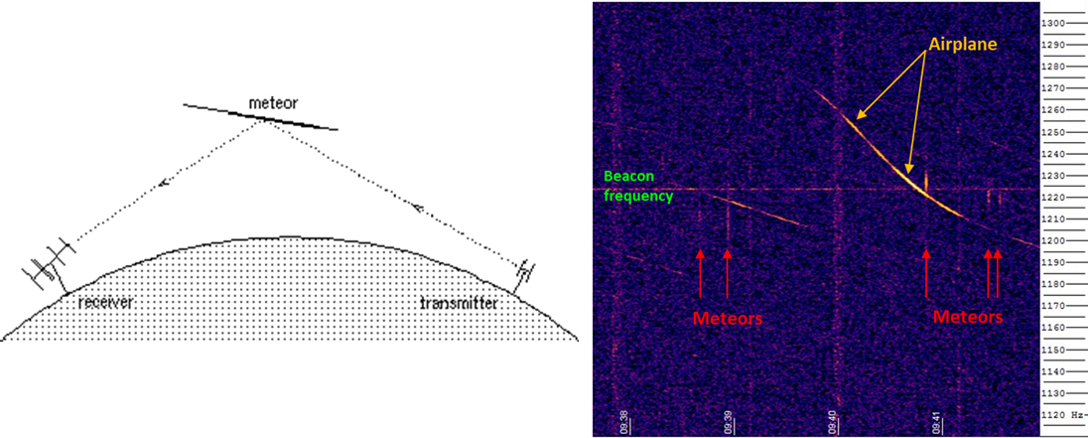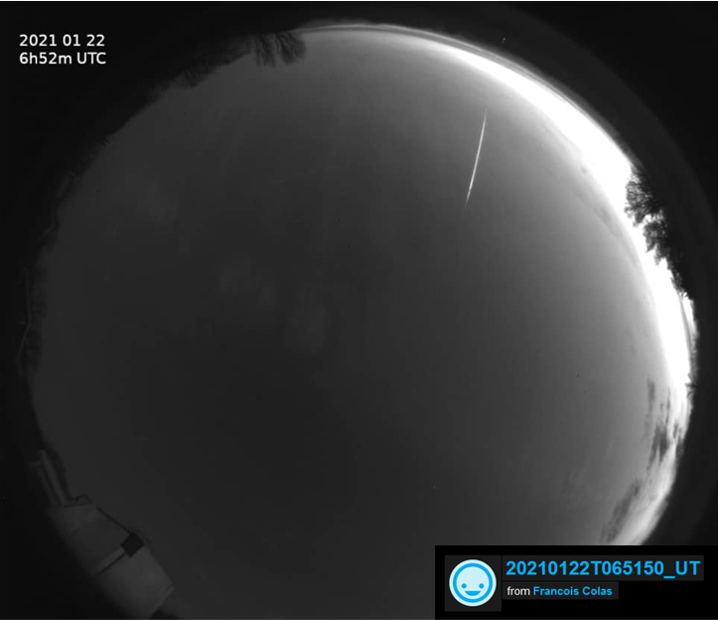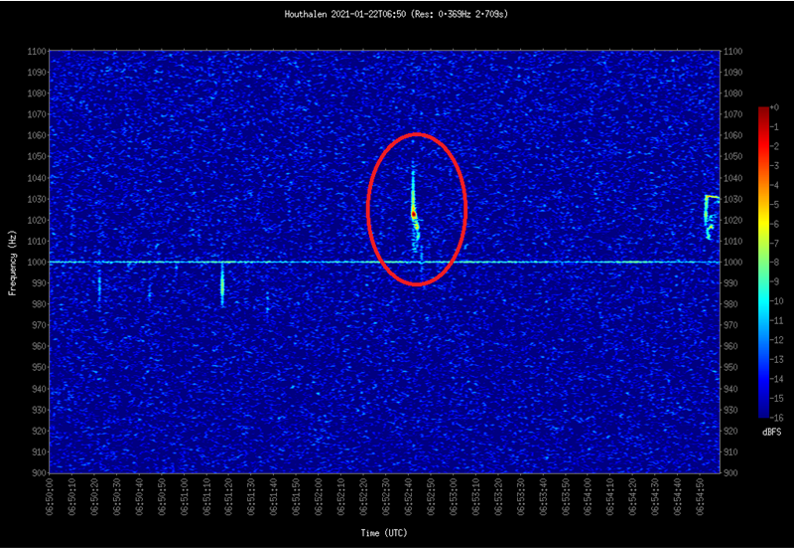Meteors, also called shooting stars, are tiny dust particles that quickly burn up in the Earth's atmosphere leaving a streak of light that is visible for only a fraction of a second. When refering to the dust particle before it entered the Earth's atmosphere, it is called a meteoroid. If the particle is large enough, it can survive its fiery passage through the Earth's atmosphere and fall on the Earth's surface. Then it is called a meteorite.

Even in case of cloudy weather, the meteors can still be observed by watching the radio signal they produce. BRAMS (Belgian RAdio Meteor Stations) is a network of radio receiving stations using forward scattering techniques to study the meteoroid population. The project is coordinated by the Royal Belgian Institute for Space Aeronomy (BISA), in the frame of the Solar-Terrestrial Centre of Excellence (STCE). It is also a very fruitful collaboration between professionals and amateurs since most stations are hosted either by Belgian radioamateurs, groups of amateur astronomers or astronomical public observatories. A dedicated beacon was installed in September 2010 in Dourbes (South of Belgium) at the Centre de Géophysique du Globe which belongs to the Royal Meteorological Institute of Belgium (RMI), and acts as the transmitter. It emits a clockwise circularly polarized signal at a frequency of 49.97 MHz with a constant power of 150W. The receiver, many kilometers away, scans a frequency range of about 200 Hz centered around this beacon frequency. These are called spectrograms, with time on the horizontal axis and frequency on the vertical axis. When a meteor enters the atmosphere, its trail (ionized particles) may reflect the radio signal from the transmitter to the receiver. As indicated in the spectrogram above, most meteor echoes appear as short vertical streaks. The longer, inversed-S shaped tracks are due to passing airplanes.

At 06:52UT on Friday 22 January 2021, observers in the Netherlands, Belgium, the United Kingdom and the north of France reported a bright meteor in the dawn sky (see the dedicated webpage of the International Meteor Organization (IMO) for videos and reports). Its brightness was compared to be between that of the planet Venus and that of the full moon, and its green-bluish color seems to suggest that the source meteoroid consisted mostly of iron and nickle. Further analysis revealed that small pebble-sized fragments may have fallen in a relatively narrow region in the northwestern portion of Belgium. Nothing has been found yet, but the search continues (see the BISA twitter page).

Initially, it was thought that stations of the BRAMS network had recorded the fireball in their spectrograms (above), but further detective work by Dr Hervé Lamy, researcher at BISA, revealed this was the echo of another meteor. Indeed, all BRAMS stations showed a meteor at 06h52m42s, but as more observations came in, it turned out that the exact time of the fireball was 06h51m50s, or about 50 seconds earlier. So it could not be the same event. One of the (to be confirmed) reasons why the fireball was not detected, may be that the trajectory was very inclined and that the meteor was coming from the north (most stations are "looking" to the south in the direction of Dourbes - see the upper left sketch in the first figure). The visible part of the fireball was calculated to be only from 70 to 30 km altitude, while usually the reflection points for the radio wave are somewhere at 80 to 100 km altitude. Therefore it is thought that the object was too far to the north and at too low an altitude to be detected by the radio stations in Belgium.
Interested? You can participate in the scientific research by participating in the citizen science project "Radio Meteor Zoo". The idea is to manually count meteor echoes in BRAMS spectrograms during some meteor showers. More info on the website https://brams.aeronomie.be/zoo/





